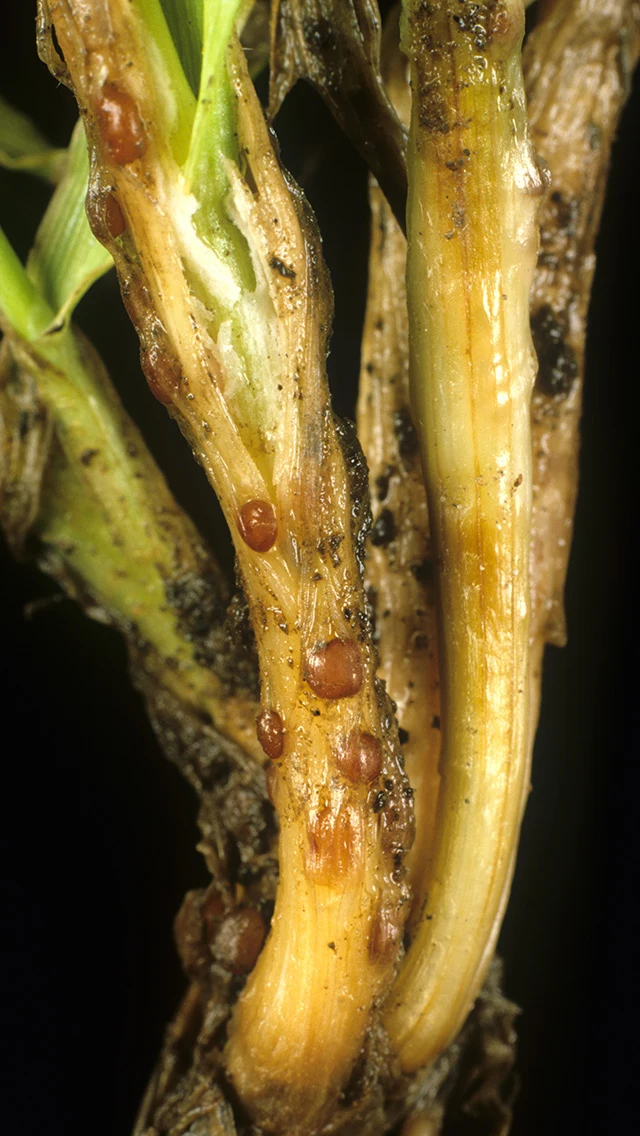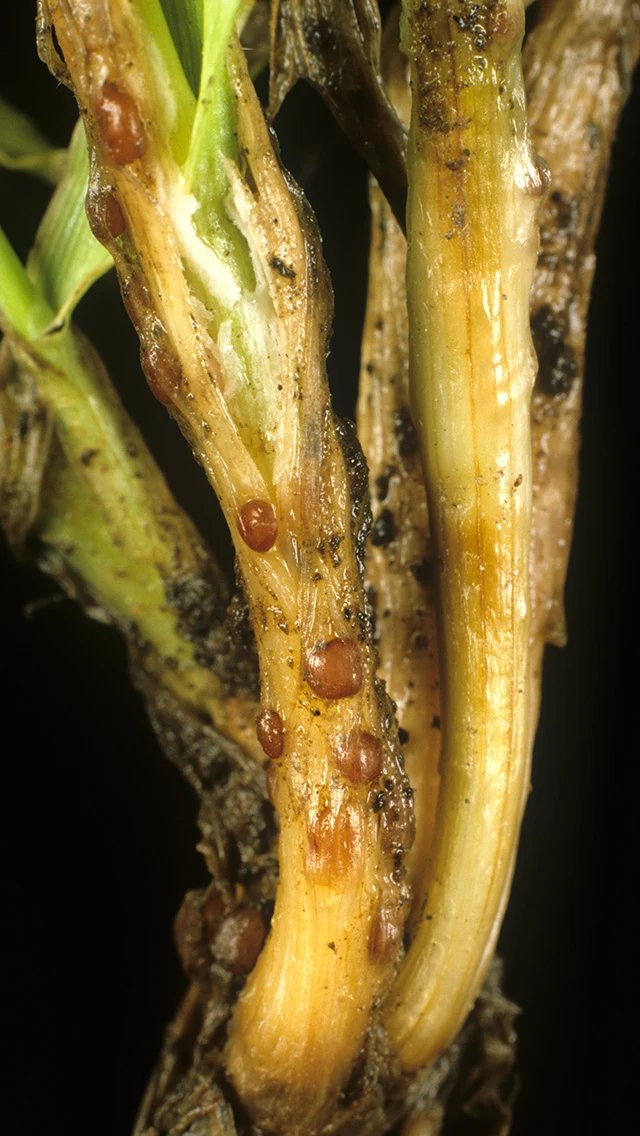
Snow Rot
Typhula incarnata
Hosts
Main hosts: barley
Secondary hosts: wheat, annual meadow-grass, chickweed
Symptoms
Plants are dead or wilted and necrotic when the snow melts. Plants often recover providing the crown isn’t damaged but crops appear thin and poorly tillered. Severe attacks lead to bear patches, those seedlings that do not die exhibit a thread and rotten appearance around the stem base. Sclerotia or fruiting bodies appear clustered around the base and the rooting system, initially small and light brown, but later becoming dark brown and often up to 3mm in diameter.
Development
The disease is caused by a fungus that grows on the surface and of unfrozen soil beneath persistent snow cover. The sclerotia from infected plants can lie dormant in the soil for months or even years and they act as the source of infection for subsequent crops. The fungus often appears to spread along the drilled rows.
Favourable Factors
A covering of snow (that reduces photosynthesis) predisposes the plant to attack. Moist conditions with the temperatures in the range of 2°c to 10°c are the most suitable for the development of the disease. Crops under stress from manganese deficiency can be more at risk to damage caused by this disease.
Importance
More commonly encountered in Scotland where snow cover is more prevalent. Tillering and yield can be reduced by up to 25%. Crops ripen unevenly and late.
Control
Avoid growing successive crops of winter barley
Some evidence suggests that seed treatments and/ or early applications of suitable foliar fungicides can have a useful effect in reducing the impact of snow rot on winter barley

Snow rot sclerotia on barley seedling (© Nigel Cattlin / FLPA)


